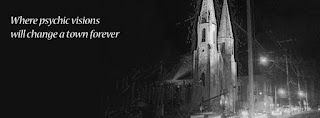Once
the Kunstgewerbemuseum, today one of the most important exhibition spaces in
Berlin, the Martin-Gropius-Bau is situated on the border between Berlin-Mitte
and Kreuzberg. The museum regularly holds art exhibitions. International
acclaimed artists exhibit here as well. The exterior facade of the Renaissance-style
building contrasts with an interior that combines the grand with the
minimalistic. The architecture of the entire building is a magnet for visitors.
In
1877, the construction of a Museum of Applied Arts begins in the German
Imperial capital. Architect Martin Gropius and his colleague Heino Schmieden
design a building in the Italian Neo-Renaissance style. Four years later, the
building is finished, and the collection presented to Berliners. The building
sustains major damage during World War II, but in the 1960s its fortunes take a
turn for the better. The grandnephew of the founding director of the Bauhaus,
Walter Gropius, is vehemently committed to restoring it from a near ruinous
state. Gradually refurbished throughout the 1970s, it again serves as an
exhibition space. Berliner Festspiele organizes exhibitions and concerts on its
three levels.
 |
| Advertisement |
Your visit shall begin where the Berlin Wall once stood. From
here, you enter directly into this exceptionally grand historic building. The
mosaics and terracotta figurines on the facade are noticeable at first sight.
The entrance is elegant and stylishly decorated in white, reflecting the
contemporary cultural zeitgeist. Immediately afterwards, you come to the heart
of the building, a glass-enclosed atrium where the current exhibition is on
display. Check out the elaborate mosaics on the floor; they reflect several
epochs and branches of the arts and crafts movement. This is the backdrop for
objects and installations by contemporary artists such as Ai Weiwei. Other
famous names include Frida Kahlo, Olafur Eliasson and David Bowie.
Temporary events
sometimes take place in the Martin-Gropius-Bau, for example JazzFest Berlin or
the national competitions of the Berliner Festspiele.
Once you arrive, you will
be fascinated with the following features:
· Regularly changing exhibitions on art, history, photography and archaeology
· Light-flooded atrium with a glass roof and magnificent arcades
· Lavish terracotta decorations and gold mosaics on the facade
· Modern exhibition rooms, a lecture and cinema hall
· Vestibule (entrance hall) with a glass dome
From
March 22 until June 16, 2019, the museum invites you to explore the meaning of
manual work process and the concept of handwork in the contemporary art scene
of Berlin.
When
Dorothy Iannone dedicated a song to her friend Mary Harding in 1977, she also
sang her emotional reactions about Berlin - the city the artist had moved to as
part of the DAAD Artists' Program a year before, and in which she still lives
today. Her song line "And Berlin will always need you" is also the
title of the first exhibition, which has been shown at the Gropius Bau. Art,
craft and concept Made in Berlin is a contemporary exhibition that introduces
Berlin artists and their artistic practice. In a compilation of existing and
specially created for the exhibition, works of traditional production methods,
aesthetics and materiality as well as historical artifacts and objects
illuminate the space.
The
exhibition focuses on central aspects of artistic creation such as authorship,
work processes, interpretation, sovereignty and power structures. These diverse
facets are explored in relation to Berlin's dynamic contemporary art scene. On
display are works such as Olaf Holzapfel's large, abstract textile work of
hand-spun natural fibers, the handmade sculptures of rope suspensions, wood and
leather by Leonor Antunes, weaving by Willem de Rooij playing with perspectives
and color transitions, a screen of collaged, patterned rugs by Nevin Aladağ, video
work with twelve screens by Theo Eshetu, and a new installation that Chiharu
Shiota has redesigned for the atrium. The exhibition ranges from ornamental and
decorative elements reminiscent of visual motifs of Eastern religions or
Byzantine mosaics and ritual objects to the development of 20th century design.
It includes craftsmanship from Berlin to South America.
The multiple
entanglements and juxtapositions involve a series of complex narratives, some
of which are highly personal, some universal, and others totally abstract.
These permeate the individual works and, finally, the entire exhibition and
equally inspire the occupation and associations of visitors and artists with
everyday and cultural objects. “And Berlin Will Always Need You - Art, Craft
and Concept Made in Berlin” shows the artistic diversity of Berlin and is a
first commitment of the Gropius Bau to become an even more regular platform for
Berlin artists.
Martin-Gropius-Bau
is open between the hours of 10am and 7pm every day, but Tuesday. For
this particular exhibition, the entrance fee is 15 Euros. However, Admission is
free for children and teenagers up to 16 years. Guided tours for school classes
and workshops are available by appointment. Severely disabled persons (more
than 50% disability) also get discounted admission. The building has
disabled-accessible entrances and a disabled-accessible lift to all exhibition
floors.
If
you need more information, visit https://www.berlinerfestspiele.de/de/gropiusbau/start.html
|
|








No comments:
Post a Comment